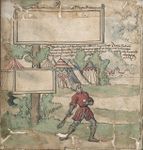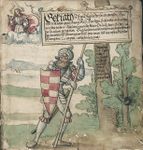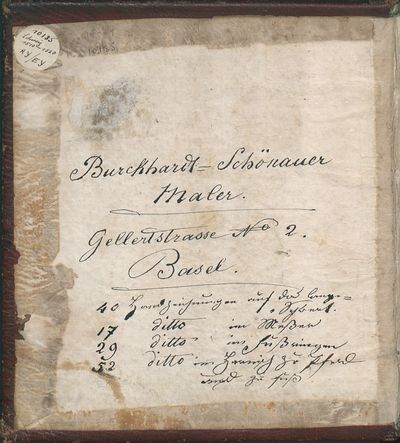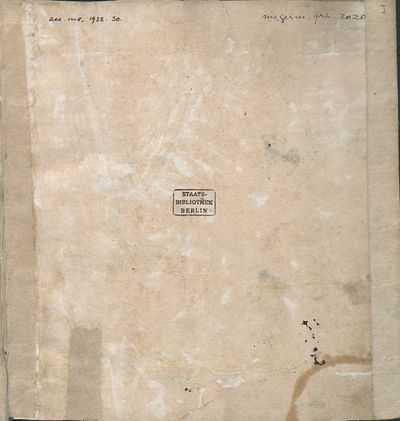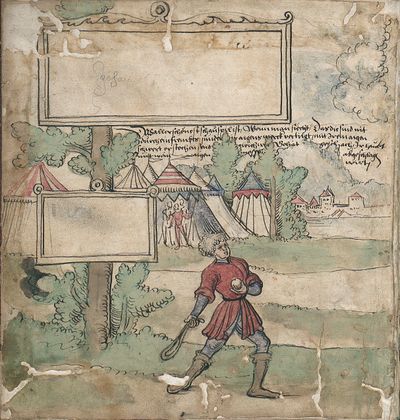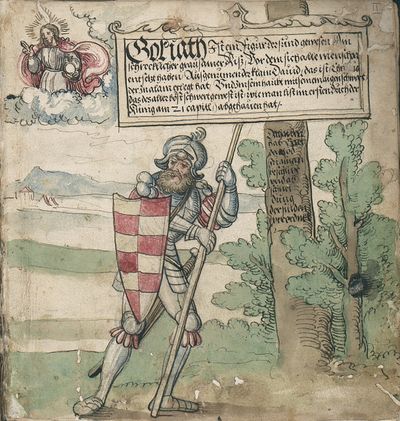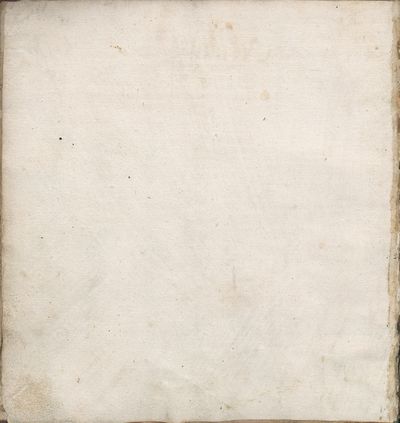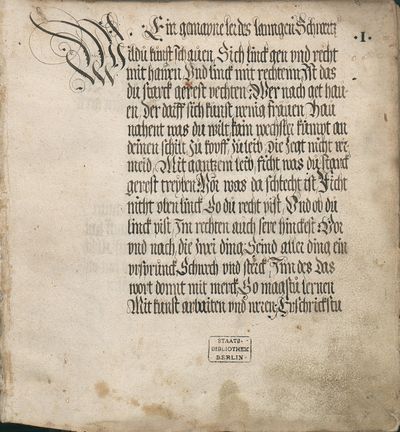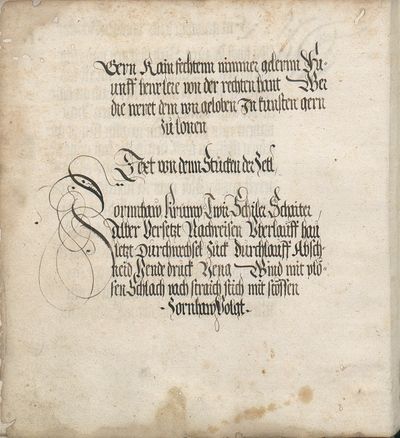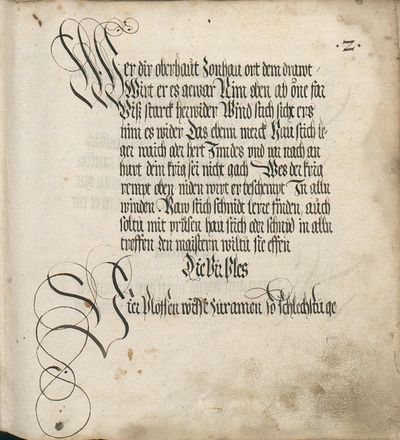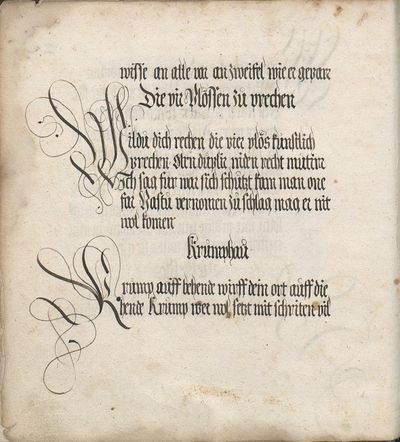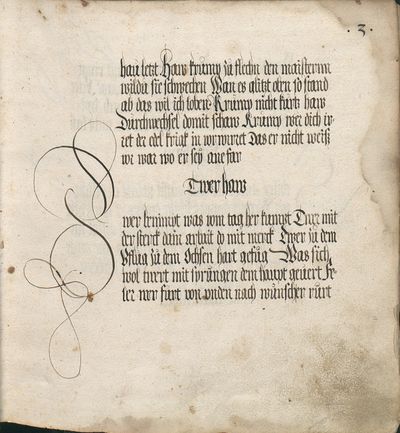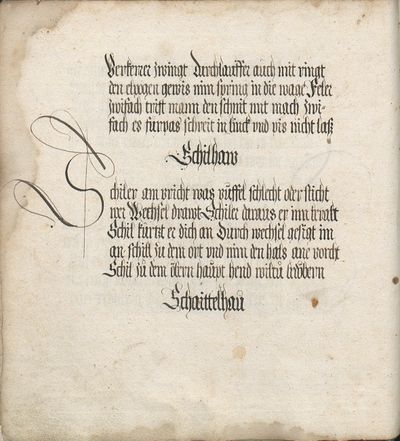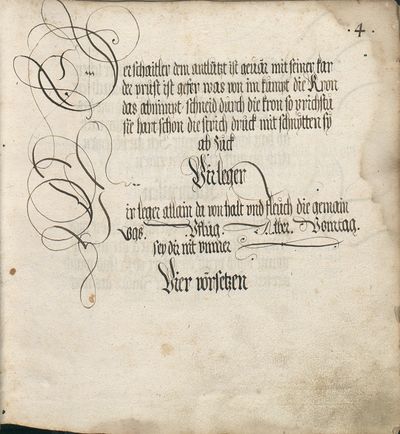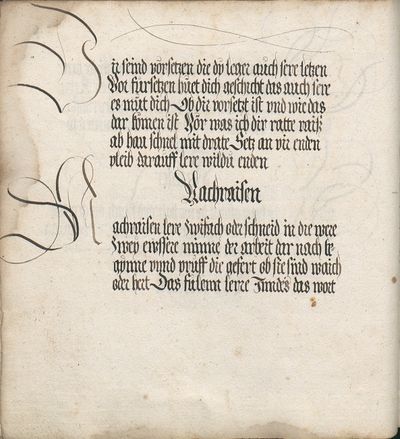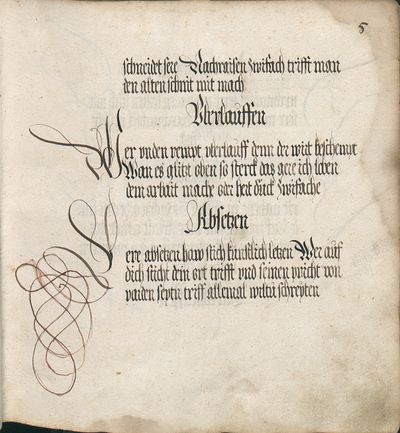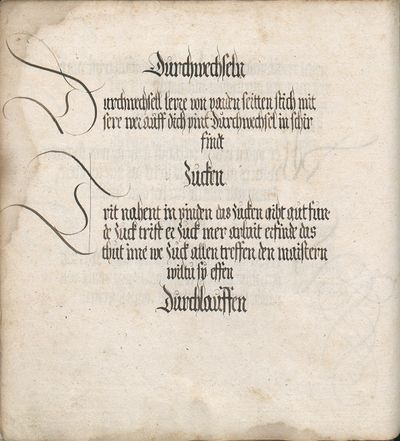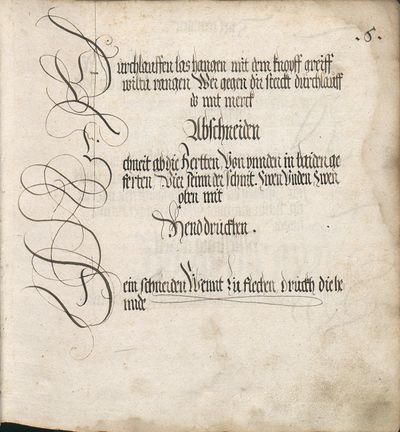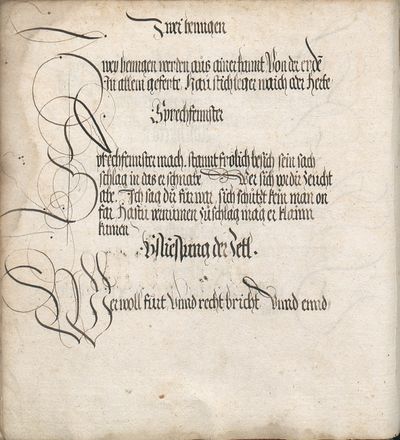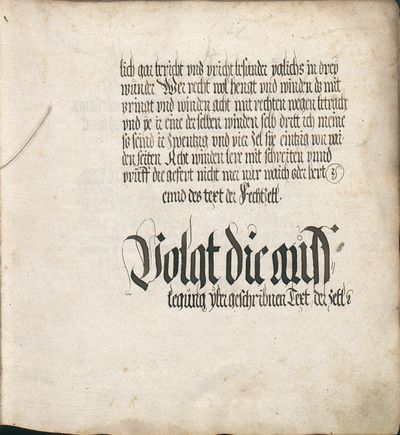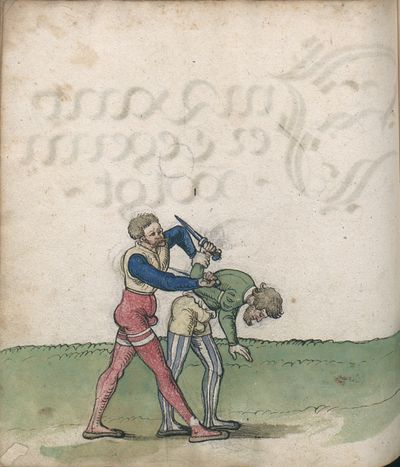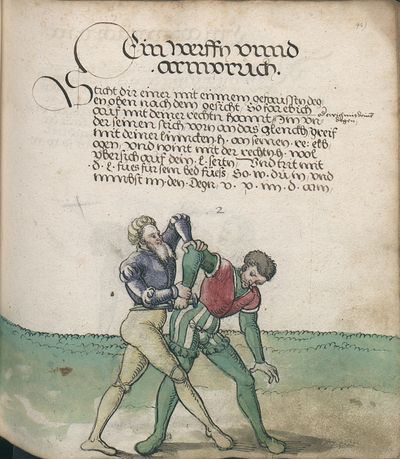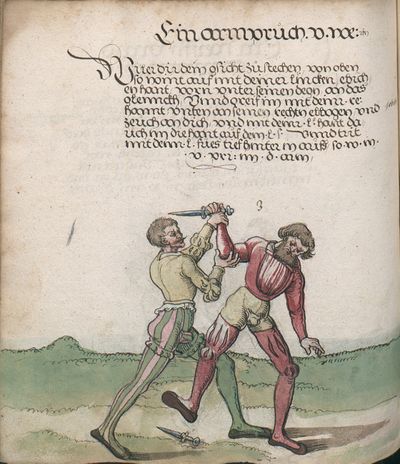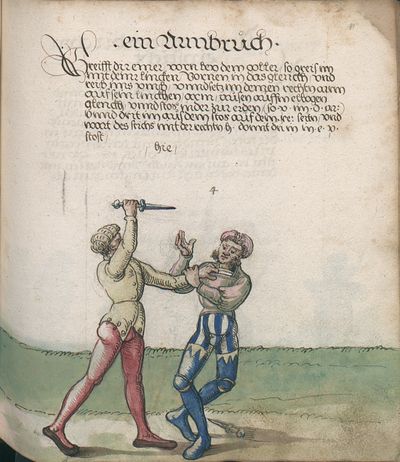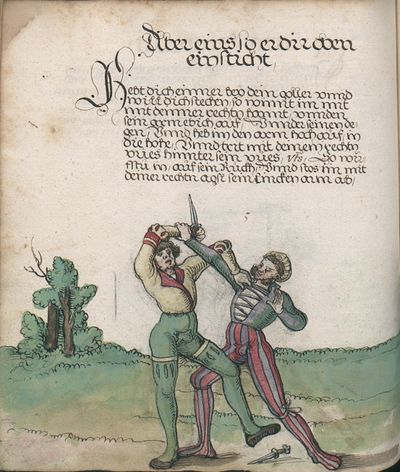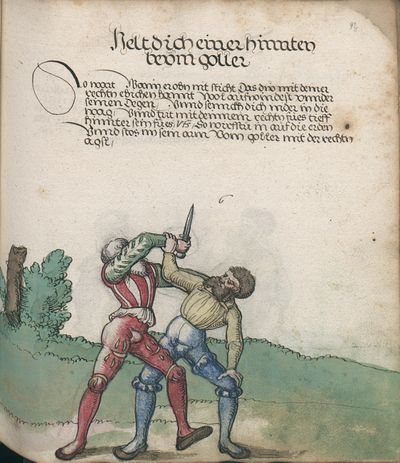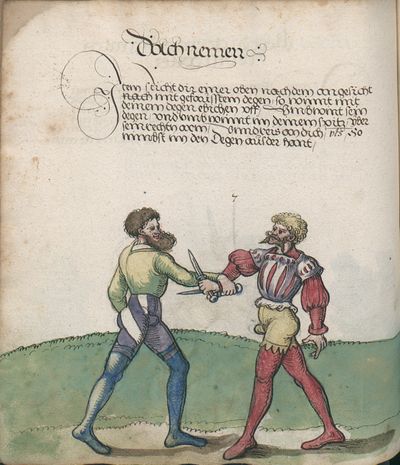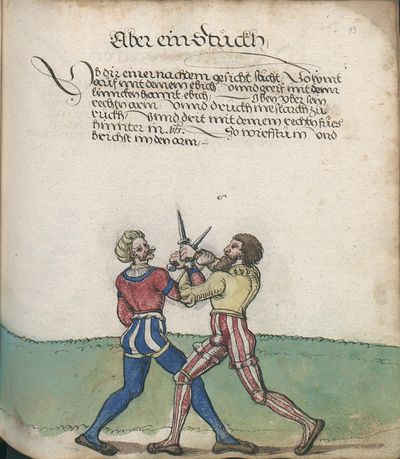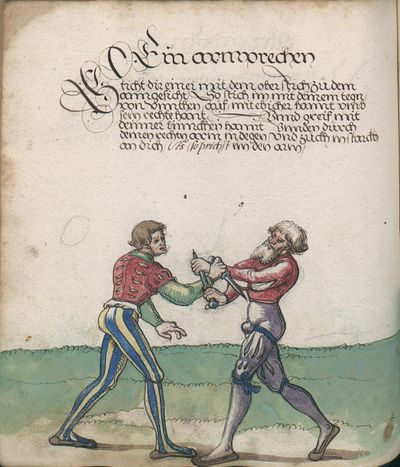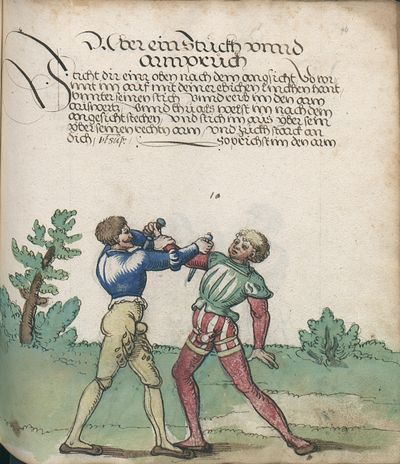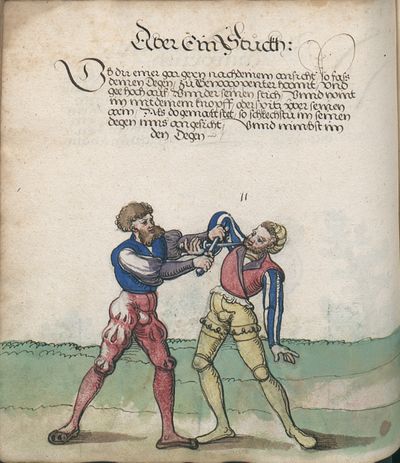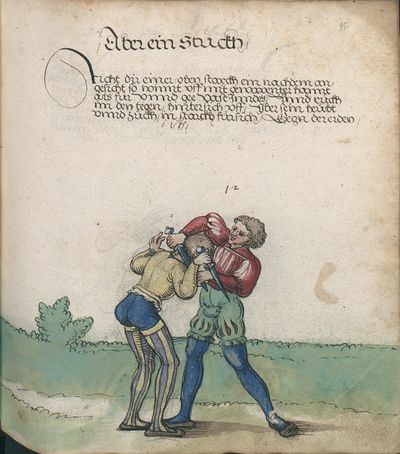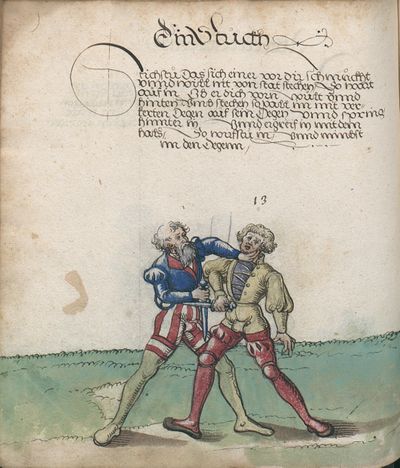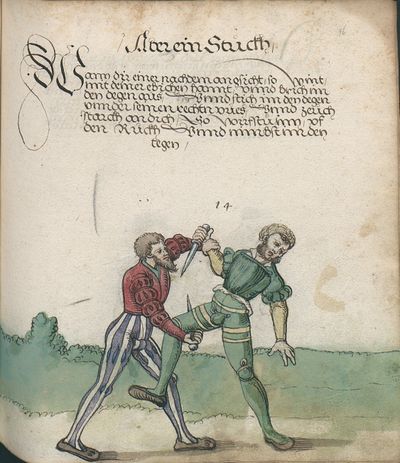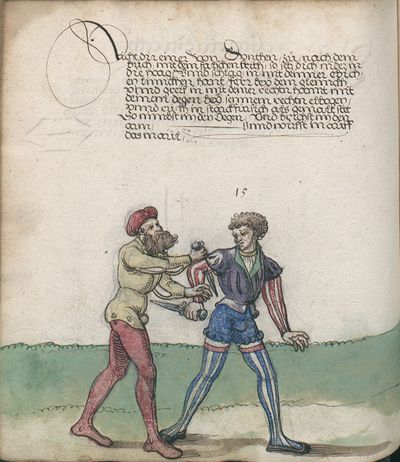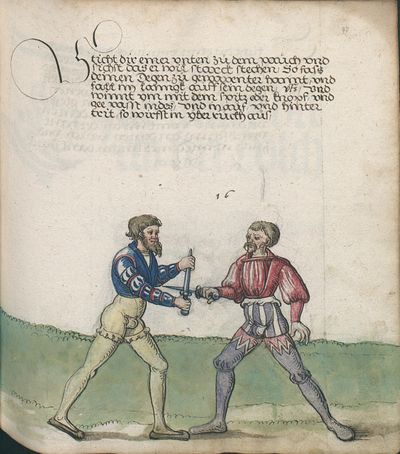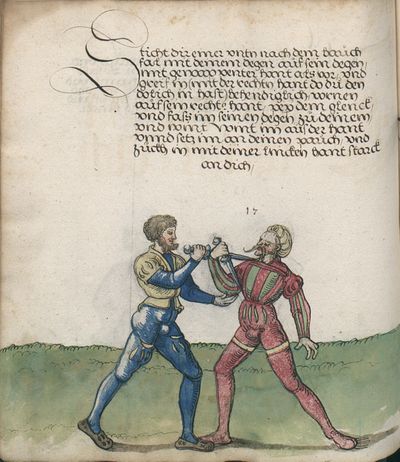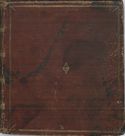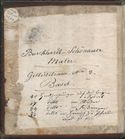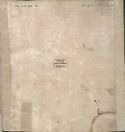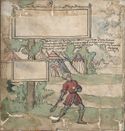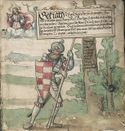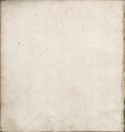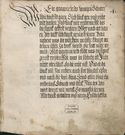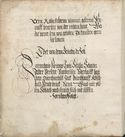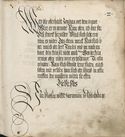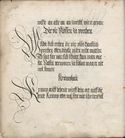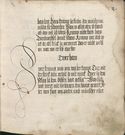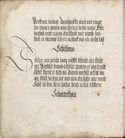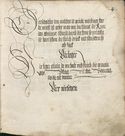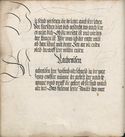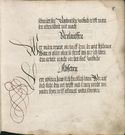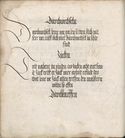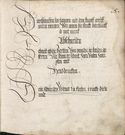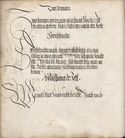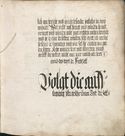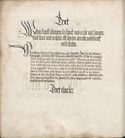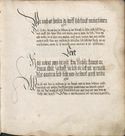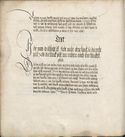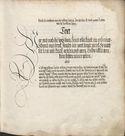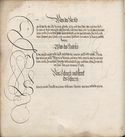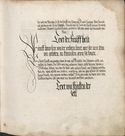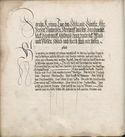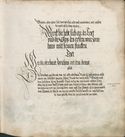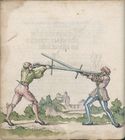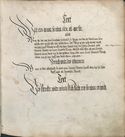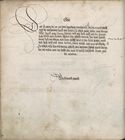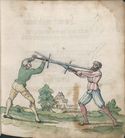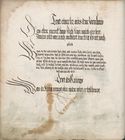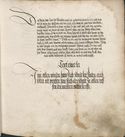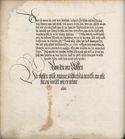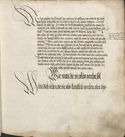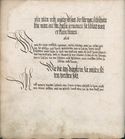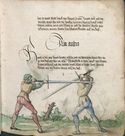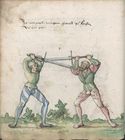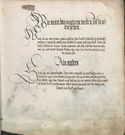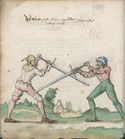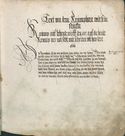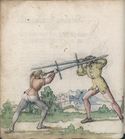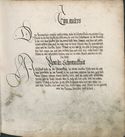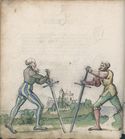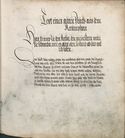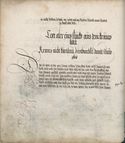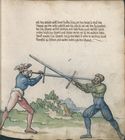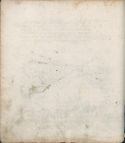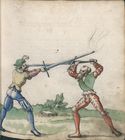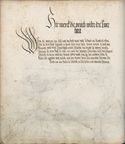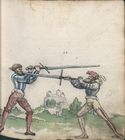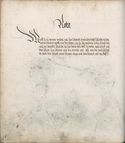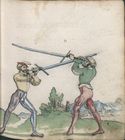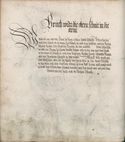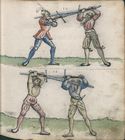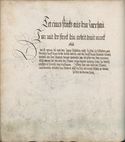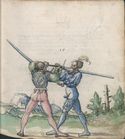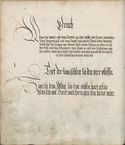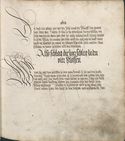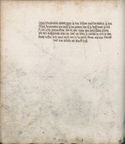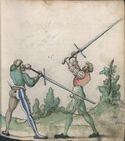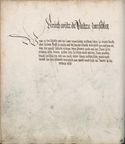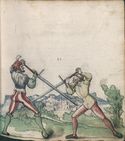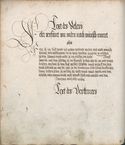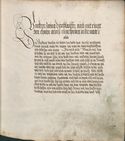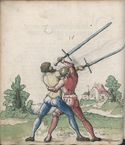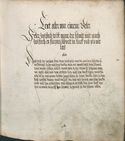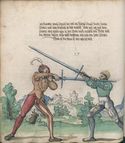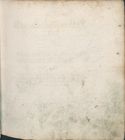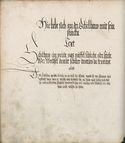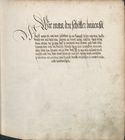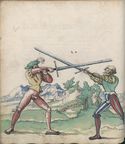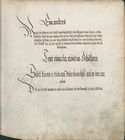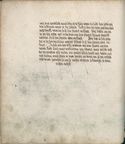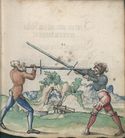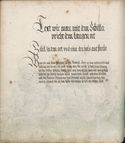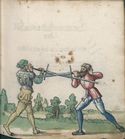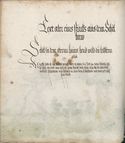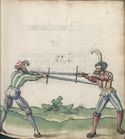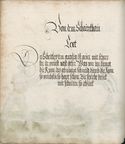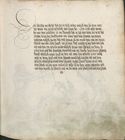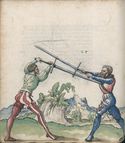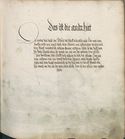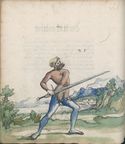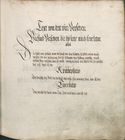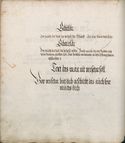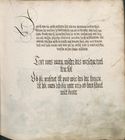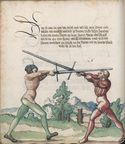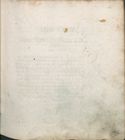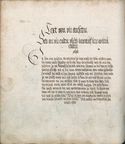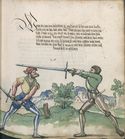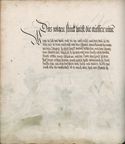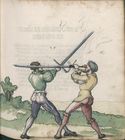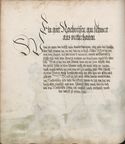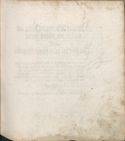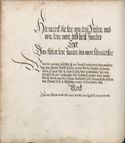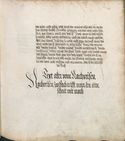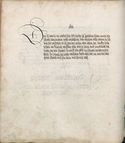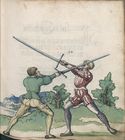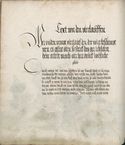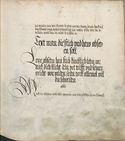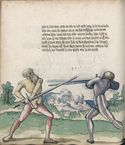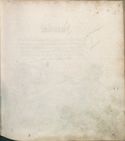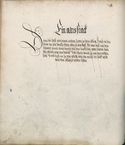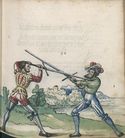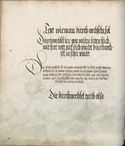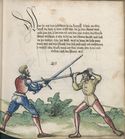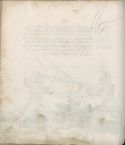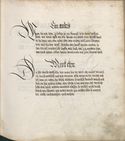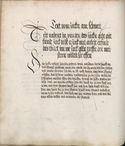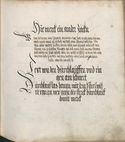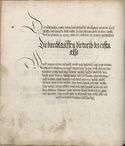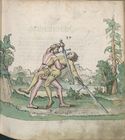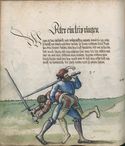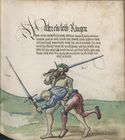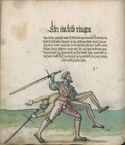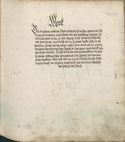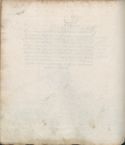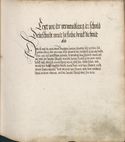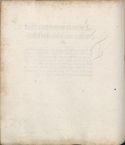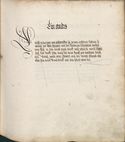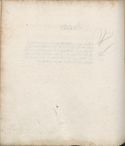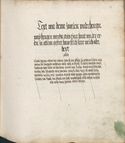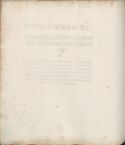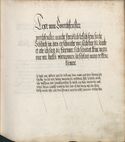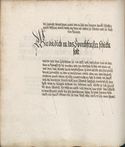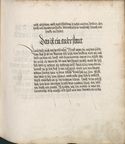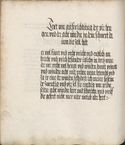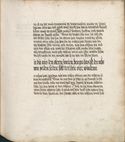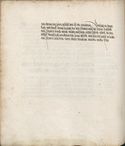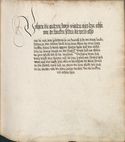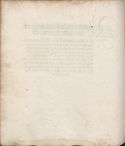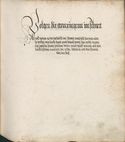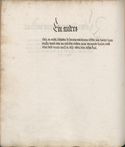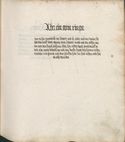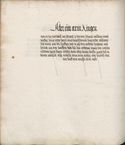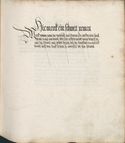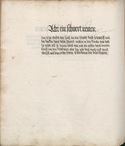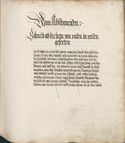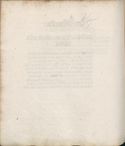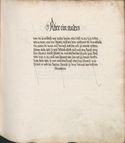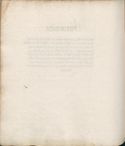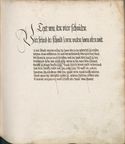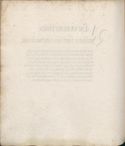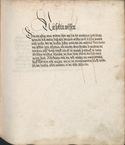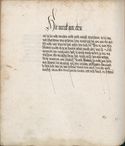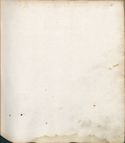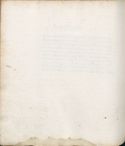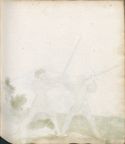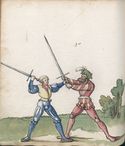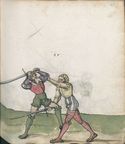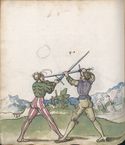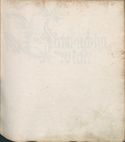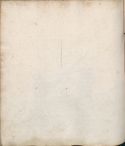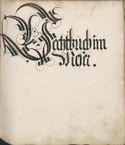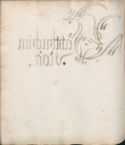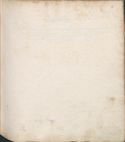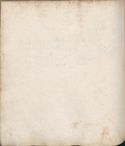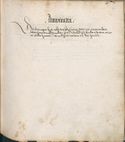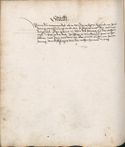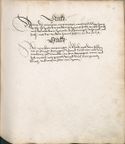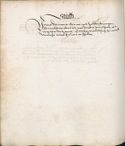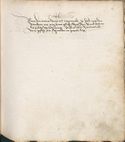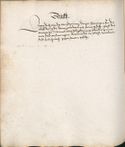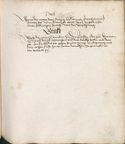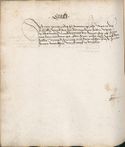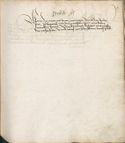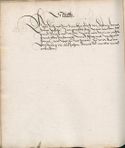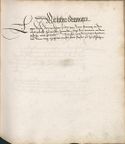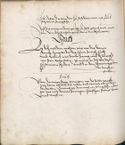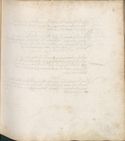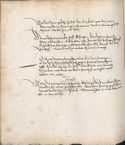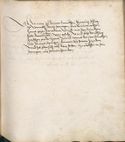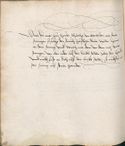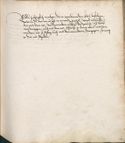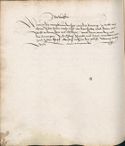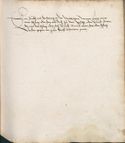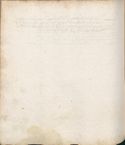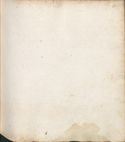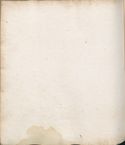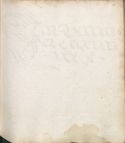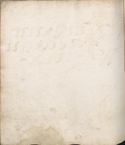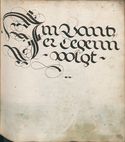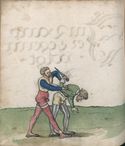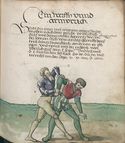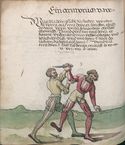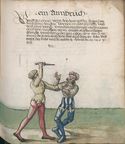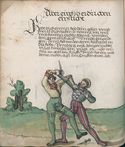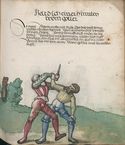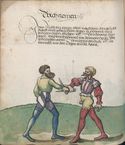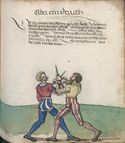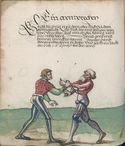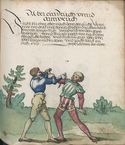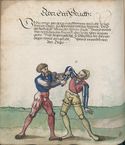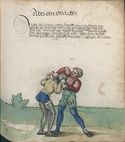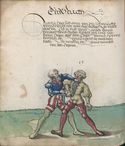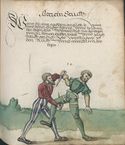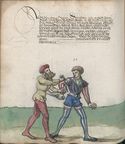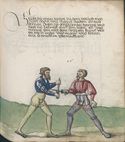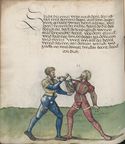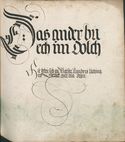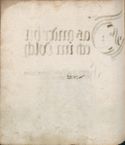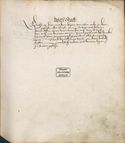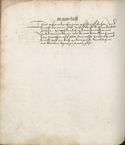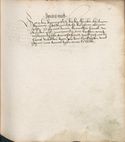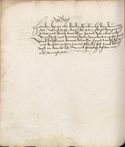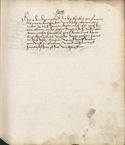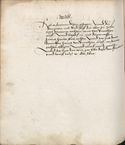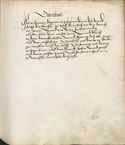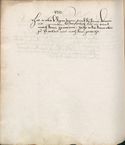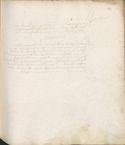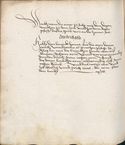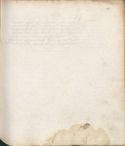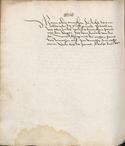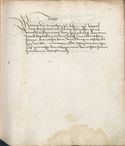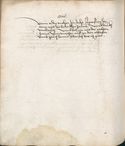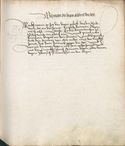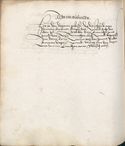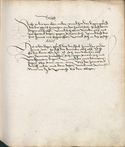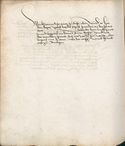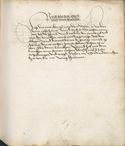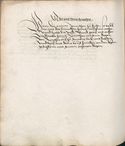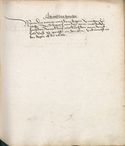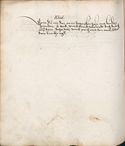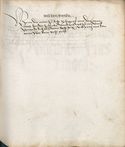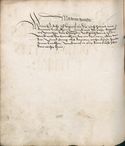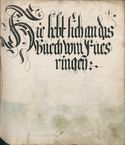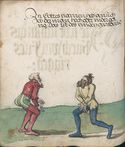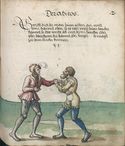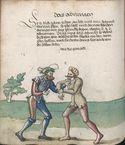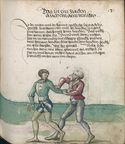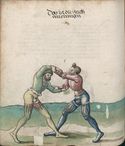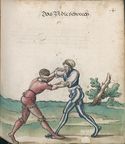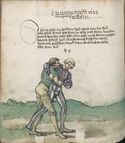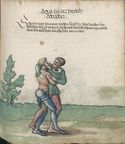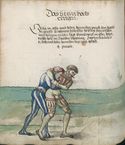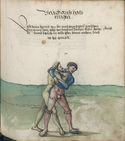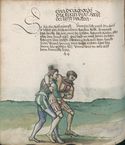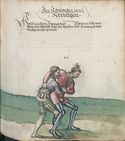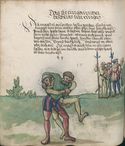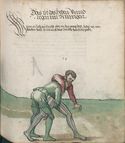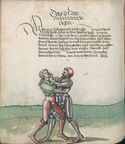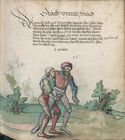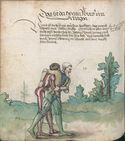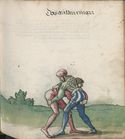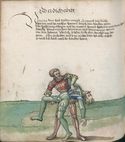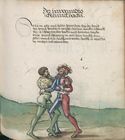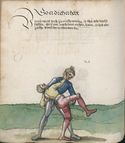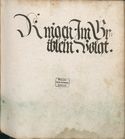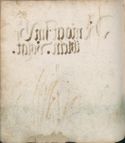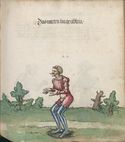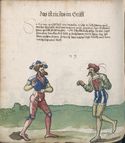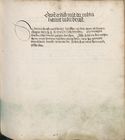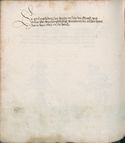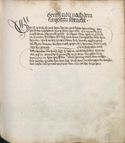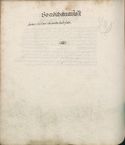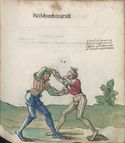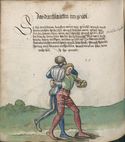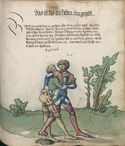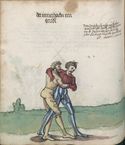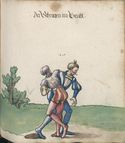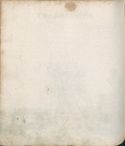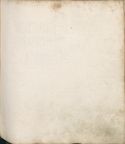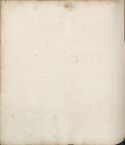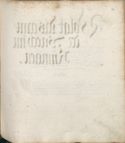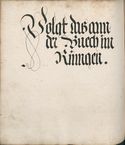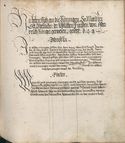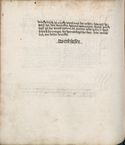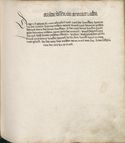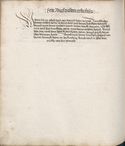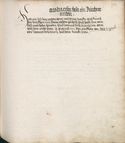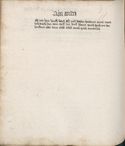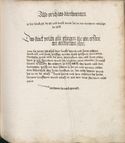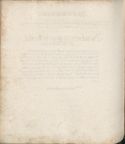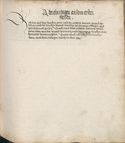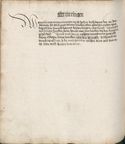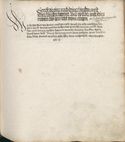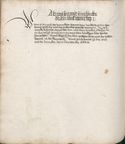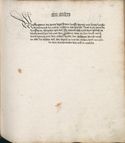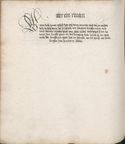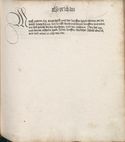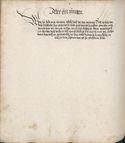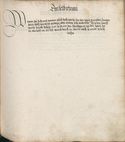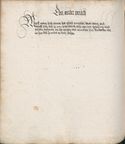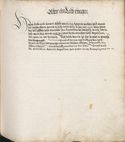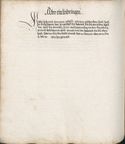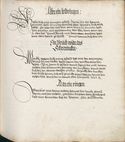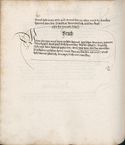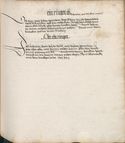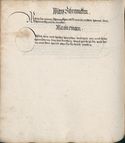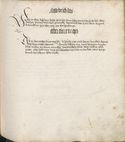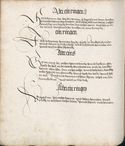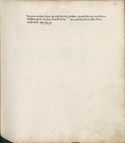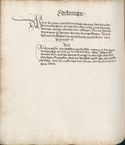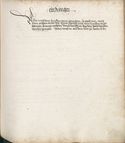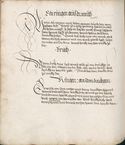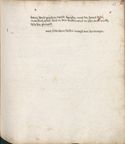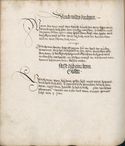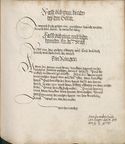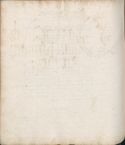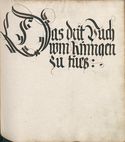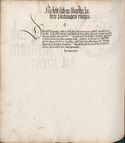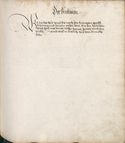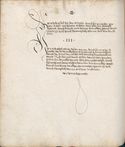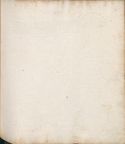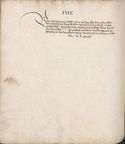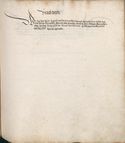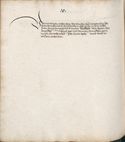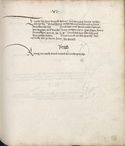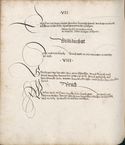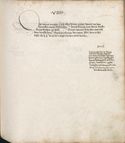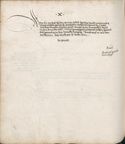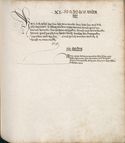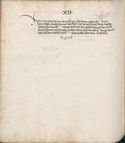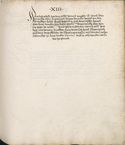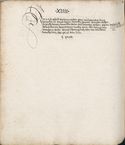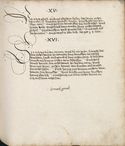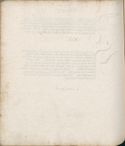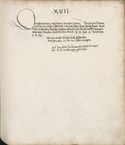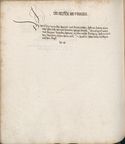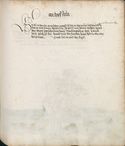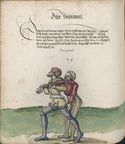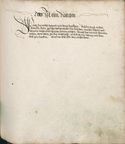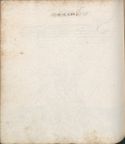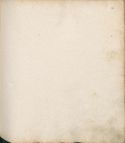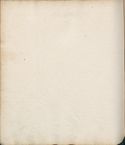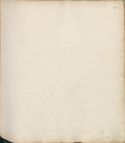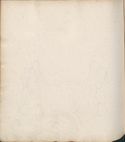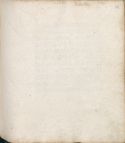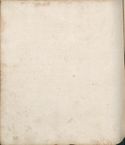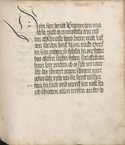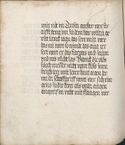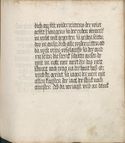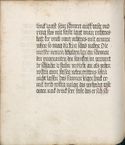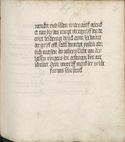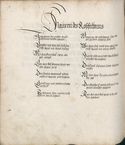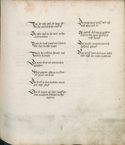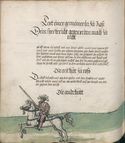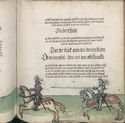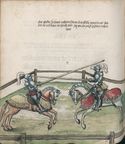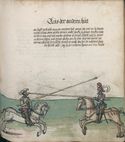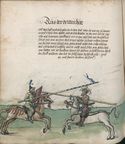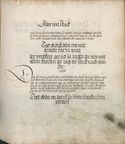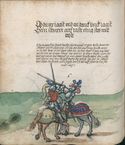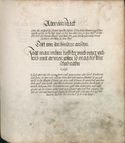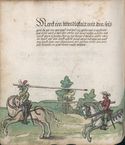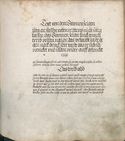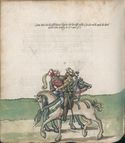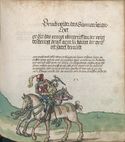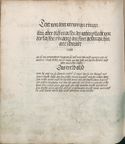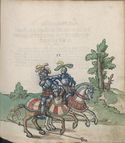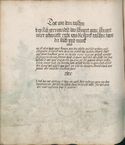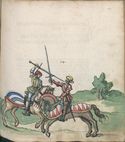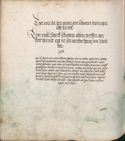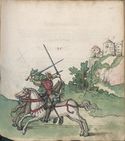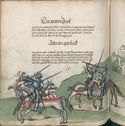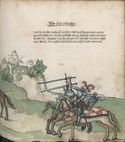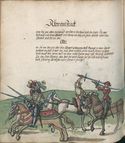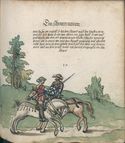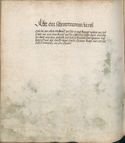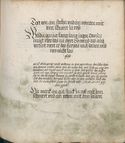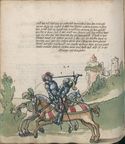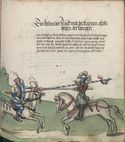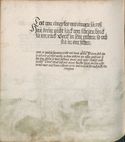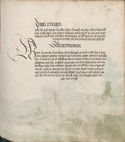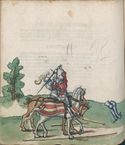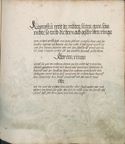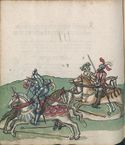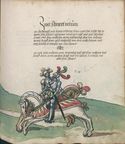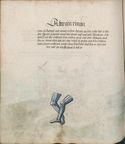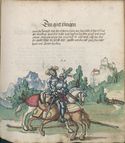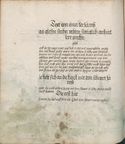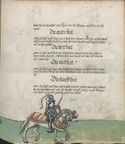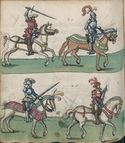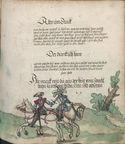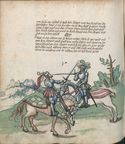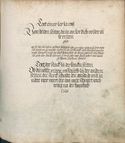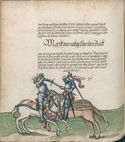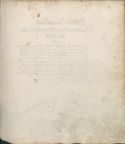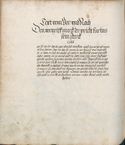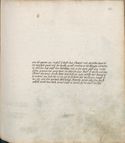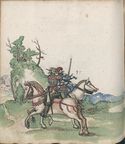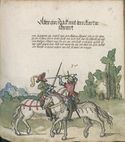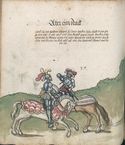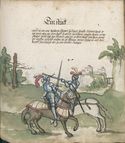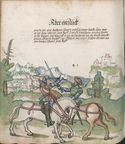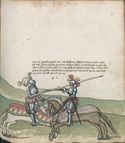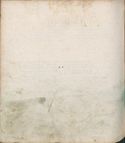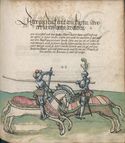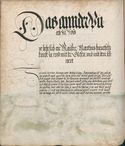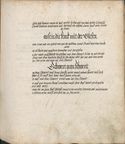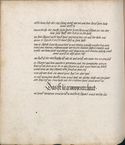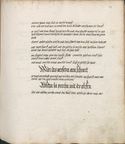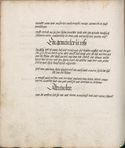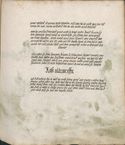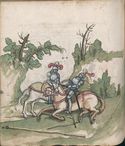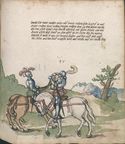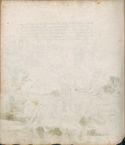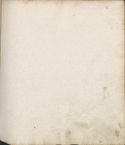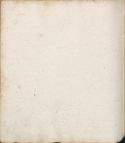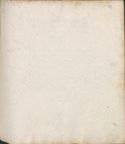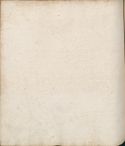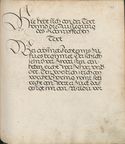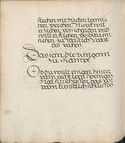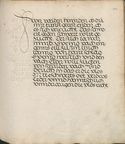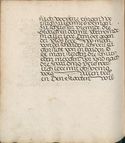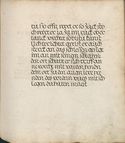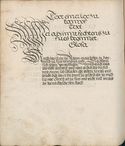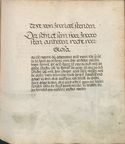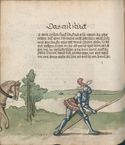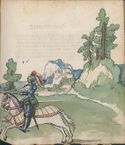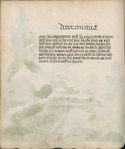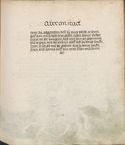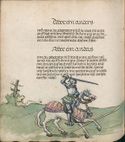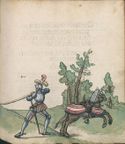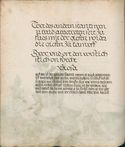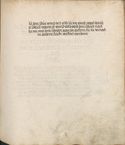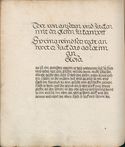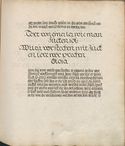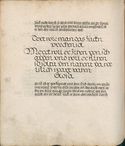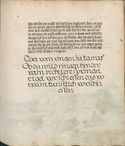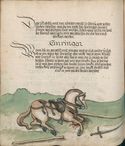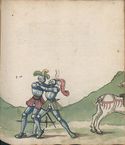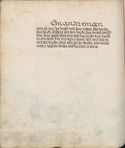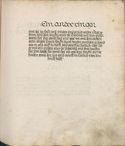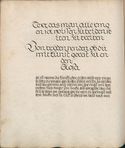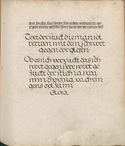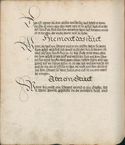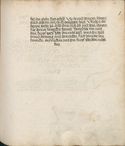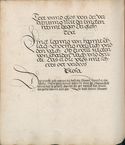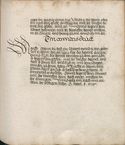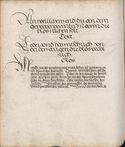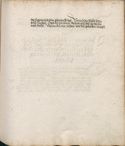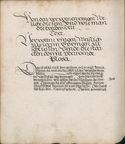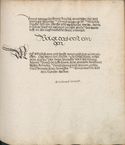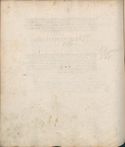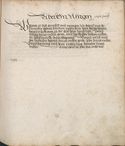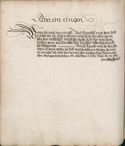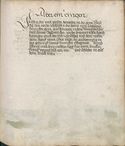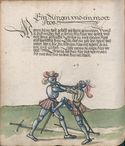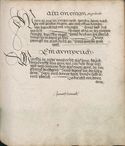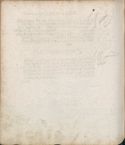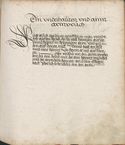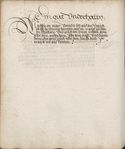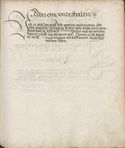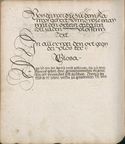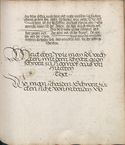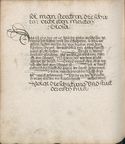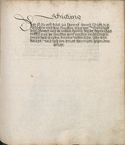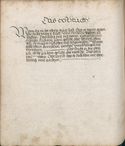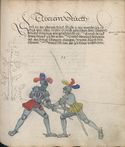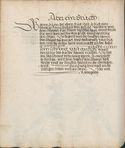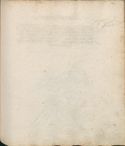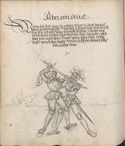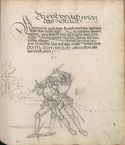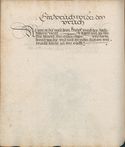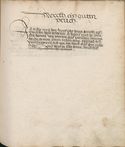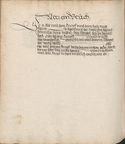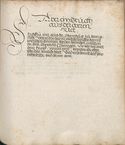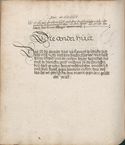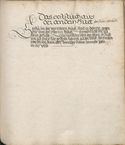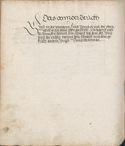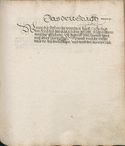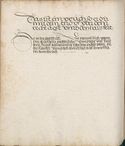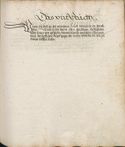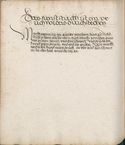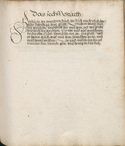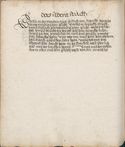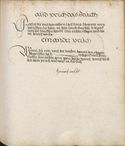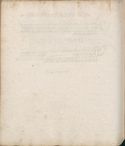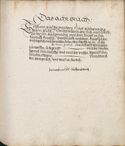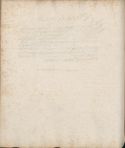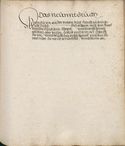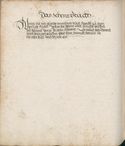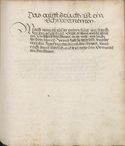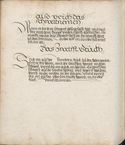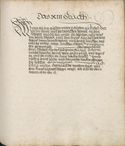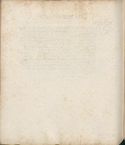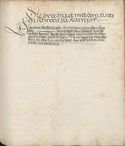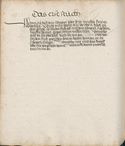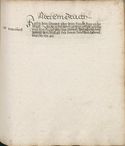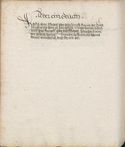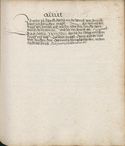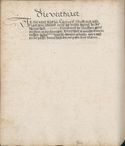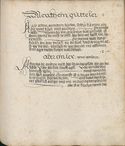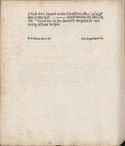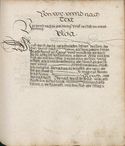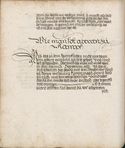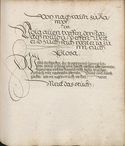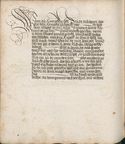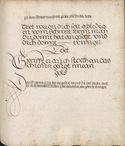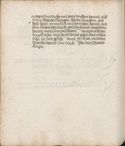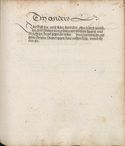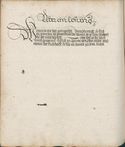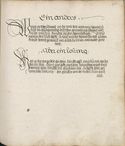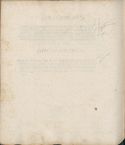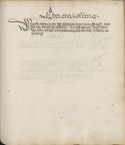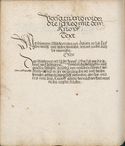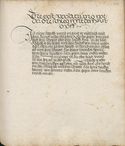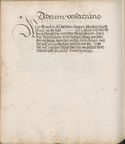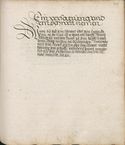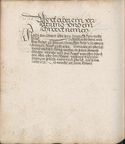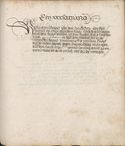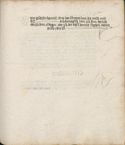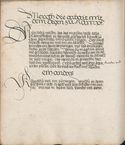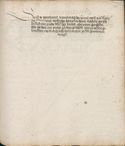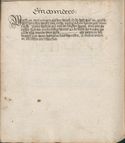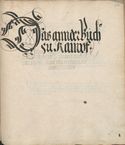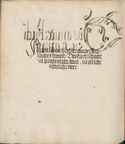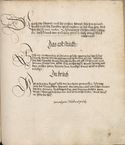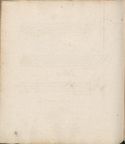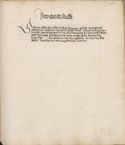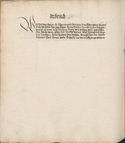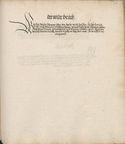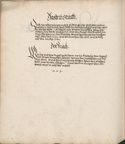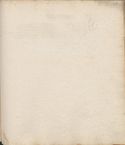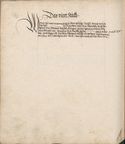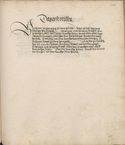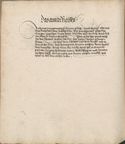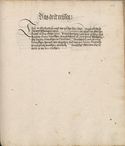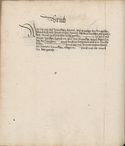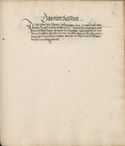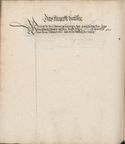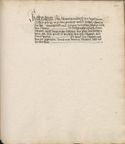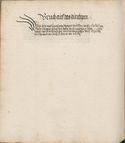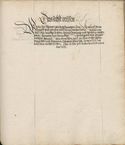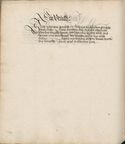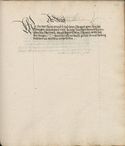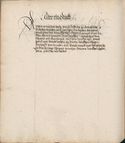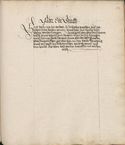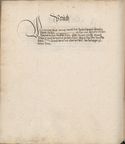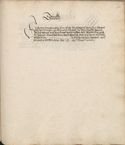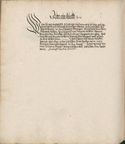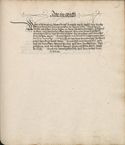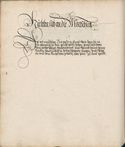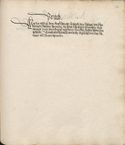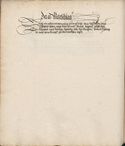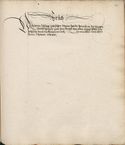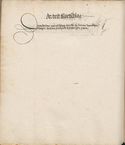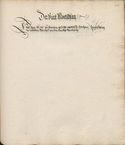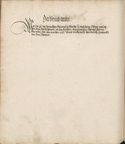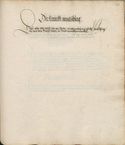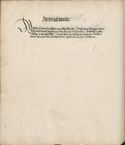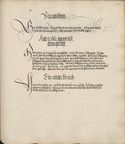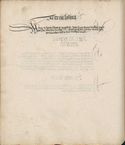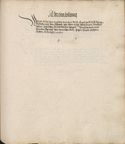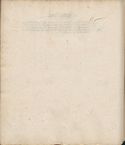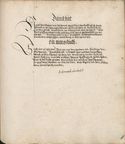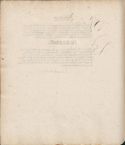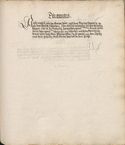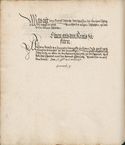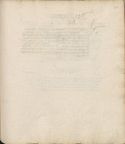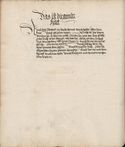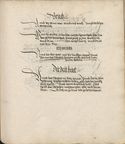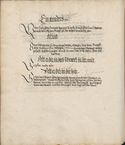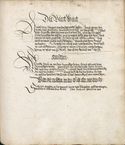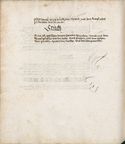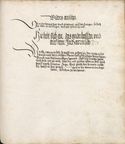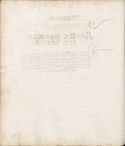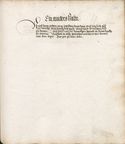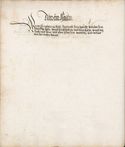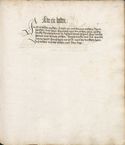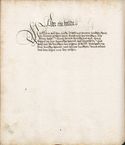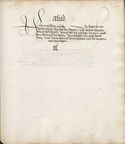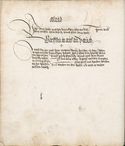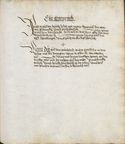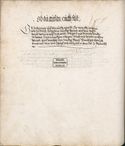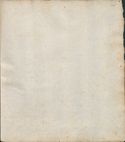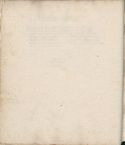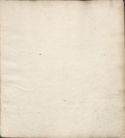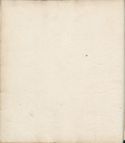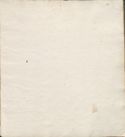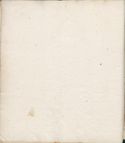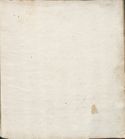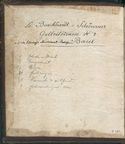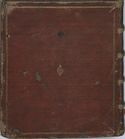|
|
You are not currently logged in. Are you accessing the unsecure (http) portal? Click here to switch to the secure portal. |
Difference between revisions of "Goliath Fechtbuch (MS Germ.Quart.2020)"
m (Text replacement - "Hutter/Sollinger" to "Wilhalm/Sollinger") |
|||
| (7 intermediate revisions by 2 users not shown) | |||
| Line 9: | Line 9: | ||
| caption = David and Goliath, Ⅰv - Ⅱr | | caption = David and Goliath, Ⅰv - Ⅱr | ||
<!----------General----------> | <!----------General----------> | ||
| − | | | + | | Hagedorn's catalog = [[HS::G]] |
| − | | Wierschin's catalog= | + | | Wierschin's catalog= — |
| Hils' catalog = [[HK::29]] | | Hils' catalog = [[HK::29]] | ||
| − | | Beck catalog = {{ | + | | Beck catalog = [http://kdih.badw.de/datenbank/handschrift/38/1/3 38.1.3] {{#set:BC=38.1.3}}<br/>[http://kdih.badw.de/datenbank/handschrift/38/4/1 38.4.1] {{#set:BC=38.4.1}} |
| − | |||
| − | |||
| − | |||
| Also known as = MS 5879 | | Also known as = MS 5879 | ||
| Type = {{plainlist | | Type = {{plainlist | ||
| Line 139: | Line 136: | ||
{{treatise end}} | {{treatise end}} | ||
| + | |- | ||
| + | ! 1r - 7r | ||
| + | | {{treatise begin | ||
| + | | title = [[Recital]] on [[long sword]] fencing by [[Johannes Liechtenauer]] | ||
| + | | width = 90em | ||
| + | }} | ||
| + | {| class="treatisecontent" | ||
|- | |- | ||
| − | ! [[ | + | ! <p>Illustrations</p> |
| − | | [[ | + | ! <p>Translation{{rating|C}}<br/>by [[Georg Gick]]</p> |
| + | ! <p>Transcription{{rating|C}}<br/>by [[Georg Gick]]</p> | ||
| + | |||
| + | |||
| + | |- | ||
| + | | [[File: MS Germ.Quart.2020 IIv.jpg|400px|center]] | ||
| + | |- <p> </p> | ||
| + | |- <p> </p> | ||
| + | |||
| + | |- | ||
| + | | [[File: MS Germ.Quart.2020 001r.jpg|400px|center]] | ||
| + | | <p>'''A proper lesson on the longsword.'''</p> | ||
| + | <p> | ||
| + | If you want to display art, you must be swift and accurate with your strikes and exhibit good technique, especially if you have engaged in a strong fight. He who strikes late can hardly take pride in his skill. Strike precisely where you intend, no master can guard against your defense, aim for the head, aim for the body. Time does not tolerate hesitation, engage fully where you stand prepared to act. Before the blow is dealt, do not meet the steel but the aggressor, Keep your gaze. So if your technique is good and you are quick, Impede them with strength while maintaining good technique. Before and after: these two concepts are to all skill a well-spring. Weakness and strength, instantly enhances the meaning. In this way, you may learn, working and improving with skillful art, especially if you frighten. | ||
| + | </p> | ||
| + | |<p> '''Ein gemaßne leredes lanngen Schwert''' </p> | ||
| + | <p> Wildů kůnst tschaůen, Sich sind gen und recht mit haůen. Und sind mit rechtem, Ist das dů starck gerestvechten. Wer nach get haůen, der daist sich kunst wenig fraůen. Haů nahent was dů wilst, kain mechster kůnst an deiner schilt, zů kopff zůlieb. Die zegt nicht armied, Mit ganzem treib ficht was dů stand gerest treyben. Vor was da schtecht ist ficht nitht oben linet. So dů recht pist, und ob dů sind pist. I'm rechten auch sere hindest. Vor und Nach: die zwei ding sind allerding ein versprůnd, schwech und sterch, Indes das word domit mit merd. So magstulernen, Mit kunst arbaiten und meren, erschrichstu. | ||
| + | </p> | ||
| + | |||
| + | |- | ||
| + | | [[File: MS Germ.Quart.2020 001v.jpg|400px|center]] | ||
| + | | <p> No fencer has ever truly learned the esteemed part from mere imitation alone. He who honors it through dedication will be gladly rewarded in the skill. </p> | ||
| + | <p> ''' Text from the students of the Zettel ''' </p> | ||
| + | <p> Wrath Stroke, Crooked, Thwart, Squinter, Scalper, Fool parries chasing, overrunning gives strokes, change through, pull, run though, slice off, press the hands, hang, wind with the openings; strike, catch, slash, thrust with jabs. </p> | ||
| + | <p> ''' The Wrath stroke ''' </p> | ||
| + | |||
| + | | <p> Gern kain fechtern nimmer gelernt kunst herlese vor der rechten haut. Wer die neret dem vongeloben, In Kunsten gern zu loben. </p> | ||
| + | <p> ''' Text von den studenten der Zetl ''' </p> | ||
| + | <p> Zornhaů, Krůmp, Twir, Schiller, Schaiter, Alber, Versetzt, Nachreisen, Überlaůft, Haů letzt Důrchmesel zůd důrchlaůft abschied Hende Drůck Leng. Bind mit plofen schlach nach straich stich mit Stoßen.</p> | ||
| + | <p> ''' Zornaw Volgt ''' </p> | ||
| + | |||
| + | |- | ||
| + | | [[File: MS Germ.Quart.2020 002r.jpg|400px|center]] | ||
| + | | <p> He who strikes at you above, wrath stroke with the point to threaten him. If he responds to it, come above without fear. Know to be strong through the wind. Stab, if he sees it, take it again. Take note: cut, stab, position soft or hard. Instantly, before, and after. Do not hasten in your war. He who runs the war above, he will be shamed below. In all windings, learn to find cuts, stabs, and slices. You shall also do so with testing, cut, stab, or slice in all meetings if you want to fool the masters. </p> | ||
| + | <p> ''' The four openings ''' </p> | ||
| + | <p> Be aware of the four openings, Aim to strike </p> | ||
| + | |||
| + | | <p> Wer dir oberhaůt, zornhau ort dem drawt. Wirt er es gewar Kim oben ab one far viss stark herwider. Wind such stich ers nim es wider. Das ebem merck haů stich leger waich oder Hert. Indes und vor nach an hurt dein krig. Sei nicht gach, wes der krig rempt oben niden wird er beschempt. in alln winden. Haw stich schnidt lerre finden aůch soltu mit prufen. Hau stitch oder schnid im alln treffen den maistern wiltů Sie effen. </p> | ||
| + | <p> ''' Die Vir Ples ''' </p> | ||
| + | <p> Vier plossen wisse zůramen so schlechltůge </p> | ||
| + | |||
| + | |- | ||
| + | | [[File: MS Germ.Quart.2020 002v.jpg|400px|center]] | ||
| + | |<p> with purpose in all variations, without hesitation according to how he behaves himself. </p> | ||
| + | <p> ''' Four openings to break ''' </p> | ||
| + | <p> If you wish to take revenge, The four openings artfully break. Double above, rightfully transmute below. I say for you truthfully, no man defends without fear. If you have understood, he will rarely come to strike. </p> | ||
| + | <p> ''' The crooked cut ''' </p> | ||
| + | <p> Crooked on him quickly. Throw your point on the hands. Who performs the crooked well, with stepping he hinders many a stroke. </p> | ||
| + | |||
| + | | <p> wille an alle var an zweifel wie er gepar. </p> | ||
| + | <p> ''' Die vier Plossen zů sprechen. </p> | ||
| + | <p> Wildů dich rechen die vier plös kůnstlich sprechen. Oben důplir niden recht můtirn. Ich sag fůr war sich schůtzt kam man one far. Hastů vernomen zů schlag mag er mit vol Kommen. </p> | ||
| + | <p> ''' Krůmphaů ''' </p> | ||
| + | <p> Krůmp auff behende wirff dein ort aůff die hende, Krump wer vol setzt mit schriten vil hau letzt. </p> | ||
| + | |||
| + | |- | ||
| + | | [[File: MS Germ.Quart.2020 003r.jpg|400px|center]] | ||
| + | |<p> Cut crooked to the flat of the masters if you wish to weaken them. When it flashes above - stand off, this I wish to praise. Don’t do the crooked, strike short, changing through show with this. Crooked who hinders you, he who keeps away from the noble war. Thus he does not truly know where to leap without fear.</p> | ||
| + | <p> ''' The thwart cut''' </p> | ||
| + | <p> The thwart takes away what the day brings. Thwart with the strength of your work. With this, mark: thwart to the plow, firmly align to the ox. What defends well, with leaps, targets the head. He who conducts a failer skillfully, leads with before and flows into after as he desires. </p> | ||
| + | |||
| + | |<p> Hau krůmp zu flechn den maisterm willdů sei schwechen. Wan es glitzt oben so stand ab das wil ich loben. Krůmp nicht kůrtzhaw. Durchwechsel domit schaw krůmp wer dich irret der edel krigk im vor wirret. Das er nicht weiss vor war wo er leip ane far. </p> | ||
| + | <p> ''' Twerhaw ''' </p> | ||
| + | <p> Twer benimpt was vom tag her kunst. Twer mit der sterk dain arbait do mit merck. Twer zů dem pflug zů dem Ochsen hard gefůg. Was sich wol twert mit Sprůngen dem haupt geuert feler wer fůrt vor unden nach wůnschen růrt </p> | ||
| + | |||
| + | |- | ||
| + | | [[File: MS Germ.Quart.2020 003v.jpg|400px|center]] | ||
| + | |<p> The reverser forces, running through also wrestles with the elbow. Take wisely, jump in balance. Failer twofold, meet him and make it with slice. Twofold it continues, step in left, and do not be loose. </p> | ||
| + | <p> ''' The squinting cut''' </p> | ||
| + | <p> The squinter breaks what buffalo strikes or stabs. He who threatens to change through, squinter robs him. Squint, if he is short against you, changing through defeats him. Squint to the point, take the throat without fear. Squint to the upper head, if you wish to damage the hands. </p> | ||
| + | <p> ''' The scalper cut ''' </p> | ||
| + | |||
| + | |<p> ngen dem haupt geuert feler wer fůrt vor unden nach wůnschen růrt |3v| Verkerer zwingt Durchlauferhitzer aůch mit ringt den elogen gewis nim spring in die wage feler zwifach trift mann den schnit unt mach zwiefach es fůrpas schreit im linck und pis nicht lass. </p> | ||
| + | <p> ''' Schilhaw ''' </p> | ||
| + | <p> Schiler am pricht was püffel schlecht oder sticht wer wechsel draut schiler daraůs er inn berabt Schil kurtzt er dich an Důrchwechsel gesigt i'm ab schilt zu dem ord und num den has ane vorcht. Schil zů dem ůbern haůpt hend widtů beiöbern. </p> | ||
| + | <p> ''' Schaittelhaů ''' </p> | ||
| + | |||
| + | |- | ||
| + | | [[File: MS Germ.Quart.2020 004r.jpg|400px|center]] | ||
| + | |<p> The scalper is dangerous to the face, with its circle, quite dangerous to the breast. What comes, the crown takes away. Slice through the crown, already hard in the strike. Press with the edge, with the slice pull them away. </p> | ||
| + | <p> ''' The four guards ''' </p> | ||
| + | <p> Four guards alone hold and distain the common. Ox, plow, fools, from the day. Do not be unaware. </p> | ||
| + | <p> ''' The four offsets ''' </p> | ||
| + | |||
| + | |<p> Der schaitler dem antlůtzt ist geůär mit seiner kar der ptust ist gefer was von i'm krumpt die Kron das abnimpt, schneid durch die kron so prichstů sie hart schon die strich drůck mit schnÿtten sÿ ab zůck. </p> | ||
| + | <p> ''' Vir Leger ''' </p> | ||
| + | <p> Vir leger allain da von halt und fleůch die gemain. Ochs, Pflug, Alber, Vom Tag. Sey dir mit unmer. </p> | ||
| + | <p> ''' Vier Vörsetzen '''</p> | ||
| + | |||
| + | |- | ||
| + | | [[File: MS Germ.Quart.2020 004v.jpg|400px|center]] | ||
| + | |<p> Four are the offsets that forsake the four guards sorely. Beware of parries. If it happens to you, it troubles you sorely. If you are parried, and how that has happened, hear what I advise you: Pull away, cut, fast with threat. Set on the four ends. Stay on, learn if you wish to end it. </p> | ||
| + | <p> ''' Chasing ''' </p> | ||
| + | <p> Learn chasing twice, or slice into the weapon. Two after intentions. The work after the beginning. And test the attacks if they are soft or hard. Learn the feeling. The word instantly </p> | ||
| + | |||
| + | |<p> Vir seind vorsetzen die dy leger aůch sere letzen. Vor fůrsetzen hüet dich geshicht das auch sere es müt dich. Ob dir vorletzt ist und wie das dar komen ist. Hör was ich dir ratte, raiß ab hau schnel mit drate. Setz an vir ended pleib daraůff lere wildů enden. </p> | ||
| + | <p> ''' Nachreisen ''' </p> | ||
| + | <p> Nachreisen lere zwifach oder schneid in die were zweÿ ewissere numme der arbeit dar nach begynne unnd průff die gefert ob sie sind waich oder hert. Das fůlenn lerre. Inndes das wart </p> | ||
| + | |||
| + | |- | ||
| + | | [[File: MS Germ.Quart.2020 005r.jpg|400px|center]] | ||
| + | |<p> slices sharply. Chase twice, if you meet, do the old slice as well. </p> | ||
| + | <p> ''' Overrunning ''' </p> | ||
| + | <p> Who wishes to strike below, overrunning is what shames him. When it clashes above, strengthen, this I praise. Make your work or press hard twice. </p> | ||
| + | <p> ''' Setting aside ''' </p> | ||
| + | <p> Learn to set aside. To artfully hinder cuts and thrusts. Who thrusts you, your point hits and ocunters his. From both sides, hit every time if you want to step. </p> | ||
| + | |||
| + | |<p> schneidet sere Nachreisen zwifach trifft man den alten schnit mit mach. </p> | ||
| + | <p> ''' Uberlaufen ''' </p> | ||
| + | <p> Wer unden rempt, uberlaůff dem der wirt beschempt. Wan es glitzt oben, so sterk das gere ich loben. Dem arbait mache oder hert důck zwifach. </p> | ||
| + | <p> ''' Absetzen ''' </p> | ||
| + | <p> Lere absetzen. Haw stich kunstlich letzen. Wer aůf dich sticht, dein ort trifft und seiner pricht. Von paiden seyten trifft allemal wiltů schreyten. </p> | ||
| + | |||
| + | |- | ||
| + | | [[File: MS Germ.Quart.2020 005v.jpg|400px|center]] | ||
| + | |<p> ''' Changing Through ''' </p> | ||
| + | <p> Learn to change through from both sides, thrust with intent. Who binds on you, changing through will find him. </p> | ||
| + | <p> ''' Pulling ''' </p> | ||
| + | <p> Step close in the bind. Pulling gives good finds. Pull, if he meets, pull more. Find the work that will hurt him. Pull in all encounters against the masters, if you wish to fool them. </p> | ||
| + | <p> ''' Running Through ''' </p> | ||
| + | |||
| + | |<p> ''' Důrchwechseln ''' </p> | ||
| + | <p> Důrchwechsell lerre von paiden seitten, stich mit sere. Wer aůff dich pint, Důrchwechsel in schir findt. </p> | ||
| + | <p> ''' Zůcken </p> | ||
| + | <p> Trit nahent in pinden das Zůcken gibt gůtfůnde. Zůck, trift er, zůck mer. Arbait erfinde das thůt ime we. Zůck allen treffen den maistern wildů sy effen. </p> | ||
| + | <p> ''' Důrchlaůffen ''' </p> | ||
| + | |||
| + | |- | ||
| + | | [[File: MS Germ.Quart.2020 006r.jpg|400px|center]] | ||
| + | |<p> Run through, let hang with the pommel. Grasp if you want to wrestle. Who comes strongly against you, the running through then remember. </p> | ||
| + | <p> ''' Slicing off ''' </p> | ||
| + | <p> Slice off the hard ones, from below in both attacks. Four are the slices, two below, and two above. </p> | ||
| + | <p> ''' Pressing hands ''' </p> | ||
| + | <p> Turn your edge, press the hands to the flats. </p> | ||
| + | |||
| + | |<p> Důrcblaůffen las hangen mit dem knopff. Greiff wiltů rangen. Wer gegen dir sterckt, durchlaůff do mit merck. </p> | ||
| + | <p> ''' Abschneiden ''' </p> | ||
| + | <p> Schneid ab die hertten, Von unnden in baiden geferten. Vier seinn der schnit. Zwen unden, zwen oben mit. </p> | ||
| + | <p> ''' Hend drůcken ''' </p> | ||
| + | <p> Dein schneiden, Wennt zů flechen, drůckn die hennde. </p> | ||
| + | |||
| + | |- | ||
| + | | [[File: MS Germ.Quart.2020 006v.jpg|400px|center]] | ||
| + | |<p> ''' Two hangings ''' </p> | ||
| + | <p> There are two hangings, from one side from the earth. In all attacks, strike, thrust, posture soft or hard. </p> | ||
| + | <p> ''' The speaking window ''' </p> | ||
| + | <p> Do the speaking window, stand blithely and look at his actions. Strike him until he is defeated. When he withdraws from you, I say to you truthfully - No one protects himself without fear. If you have learned this, he can scarsely manage to strike. </p> | ||
| + | <p> ''' Conclusion of the Epitome ''' </p> | ||
| + | <p> Who advances well and breaks correctly,and ult- </p> | ||
| + | |||
| + | |<p> ''' Zwei henngen ''' </p> | ||
| + | <p> Zwey henngen aůs ainen hannt, von der erde. In allen geferte, hau, stich, leger waich oder herte.</p> | ||
| + | <p> ''' Sprechfenster ''' </p> | ||
| + | <p> Sprechfenster mach. Stannt foolich besich Sein sach schlag in dus er schnabe. Wer sich von dir zeůcht abe. Ich sag dir fůr war, sich schutz kein man on far, hastů vernůmen zůschlag mag er klainn kumen. </p> | ||
| + | <p> ''' Besiessung der zettl ''' </p> | ||
| + | <p> Wer woll fůrt, unnd recht bricht, unnd ennd- </p> | ||
| + | |||
| + | |- | ||
| + | | [[File: MS Germ.Quart.2020 007r.jpg|400px|center]] | ||
| + | |<p> -imately makes it all right, and particularly divides each into three wonders.Who hangs well rightly and brings forth the windings, and considers the eight windings with rightful ways in mind, and each one of those same windings, I consider to be triple, So there are Twenty-four. Count them only, from both sides. Learn eight windings with stepping, and test the bind, no more than soft or hard. </p> | ||
| + | <p> ''' End of the text of the Fencing Epitome ''' </p> | ||
| + | <p> ''' Here follows the Explaination ''' </p> | ||
| + | <p> Explaination of the text written above in the Epitome. </p> | ||
| + | |||
| + | |<p> -lich gar bericht und pricht besunder yglichs in drey wůnder. Wer recht wohl hengt und winden du mit pringt und winden acht mit rechten wegen betracht und ye ir eine der selben winden selb dritt ich meine so seind ir zwenzig und vier zel sye eintzig von paiden saiten. Acht winde lere mit schreiten unnd pruff die gedert nicht mer nur waich oder hert. </p> | ||
| + | <p> ''' Ennd des text der FechtZetl '''</p> | ||
| + | <p> ''' Volgt dir aůss ''' </p> | ||
| + | <p> legůng ybergeschribnen Text der zetl’s </p> | ||
| + | |||
| + | |} | ||
| + | {{treatise end}} | ||
| + | |||
|- | |- | ||
| Line 913: | Line 1,088: | ||
== Additional Resources == | == Additional Resources == | ||
| − | + | {{bibliography}} | |
| − | |||
| − | |||
== References == | == References == | ||
| Line 931: | Line 1,104: | ||
| source link = http://www.bj.uj.edu.pl/ | | source link = http://www.bj.uj.edu.pl/ | ||
| source title= Biblioteka Jagiellońska | | source title= Biblioteka Jagiellońska | ||
| − | | license = | + | | license = public domain |
}} | }} | ||
{{sourcebox | {{sourcebox | ||
Latest revision as of 18:12, 26 August 2024
| Goliath Fechtbuch | |||||
|---|---|---|---|---|---|
| MS germ. quart. 2020, Biblioteka Jagiellońska Kraków, Poland | |||||
| |||||
| |||||
| Also known as | MS 5879 | ||||
| Type | |||||
| Date | 1535 - 1540 | ||||
| Place of origin | Augsburg or Landshut | ||||
| Language(s) | Early New High German | ||||
| Author(s) | |||||
| Compiler | Georg Lemberger | ||||
| Scribe(s) | Unknown | ||||
| Illustrator(s) | Georg Lemberger | ||||
| Patron | Unknown | ||||
| Material | Paper, with a modern leather binding | ||||
| Size | 285 folia (200 mm × 217 mm) | ||||
| Format | Double-sided; text with scattered illustrations | ||||
| Treatise scans |
| ||||
The Goliath Fechtbuch (MS germ. quart. 2020) is a German fencing manual created between 1535 and 1540,[1] possibly by Georg Lemberger (1495/1500-1540/45).[2] The original currently rests in the holdings of the Biblioteka Jagiellońska in Kraków, Poland. It is generally nicknamed "Goliath" due to the depiction of the Biblical confrontation between David and the giant Goliath on the inside cover. The reason for the inclusion of this painting is entirely unclear, though it may simply come down to the popularity of the story in this period as an example of a righteous single combat. (It may also be an allusion to the size of the swords depicted in the illustrations of unarmored fencing.)
Goliath is a compilation text consisting of treatises on a variety of martial topics by several different masters, most of whom who stood in the tradition of the grand master Johannes Liechtenauer. There appears to be a single illustrator throughout, and potentially a single scribe as well, despite the number of different scripts employed.[3] The first several sections include elaborately painted illustrations, but the illustrations cease abruptly toward the beginning of the section on armored fencing, with the final few illustrations being merely rough line drawings. This, in addition to the presence of blank spaces through the rest of the manuscript, seems to suggest that additional illustrations were planned but never completed (perhaps due to Lemberger's death some time after 1537).
Zabinski assumes that the date on the cover is correct and speculates based on a number of factors that Goliath was commissioned for Maximilian Ⅰ (1459-1519), a well-known aficionado of military texts.[4] Welle, however, rejects this hypothesis and date, and arrives at a date in the latter 1530s based on handwriting and watermark analysis.[5]
Contents
Provenance
The known provenance of the MS German Quarto 2020 is:[6]
- Created between 1535 and 1540 in southern Germany by Georg Lemberger.
- before 1564 – partially copied by Lienhart Sollinger into a manuscript included in the Cod. Ⅰ.6.2º.2.
- before 1923 – owned by Johann Ludwig Burckhardt (1807-1878) and Jean Louis Burckhardt (1883-1943). The terms of ownership of both men are unknown; sold 1923.
- 1923-1938 – held by Fischer Gallery and Kunsthandel A.-G. Böhler & Steinmeyer in Luzern, Germany (sold to the Staatsbibliothek zu Berlin, 1938). Offered to Robert Lyons Scott several times in 1935, but no sale took place.
- 1938-1946 – held by the Staatsbibliothek zu Berlin in Berlin, Germany; moved to Fürstenstein Castle in 1941, and then Grüssau monastery in 1944. Transferred to Kraków after World War Ⅱ.
- 1946-present – held by the Biblioteka Jagiellońska in Kraków, Poland.
Contents
| Ⅰr - Ⅱv |
| ||||||||||||||||||||||||||||||||||||||||||||||||||||||
|---|---|---|---|---|---|---|---|---|---|---|---|---|---|---|---|---|---|---|---|---|---|---|---|---|---|---|---|---|---|---|---|---|---|---|---|---|---|---|---|---|---|---|---|---|---|---|---|---|---|---|---|---|---|---|---|
| 1r - 7r |
| ||||||||||||||||||||||||||||||||||||||||||||||||||||||
| 7v - 73v | Gloss of Liechtenauer's Recital on long sword fencing by Pseudo-Peter von Danzig | ||||||||||||||||||||||||||||||||||||||||||||||||||||||
| 75r - 84v | Pole weapons by Andre Paurenfeyndt | ||||||||||||||||||||||||||||||||||||||||||||||||||||||
| 85r - 86r | Pole weapons by Peter Falkner | ||||||||||||||||||||||||||||||||||||||||||||||||||||||
| 89r - 97v |
| ||||||||||||||||||||||||||||||||||||||||||||||||||||||
| 98r - 102v | Dagger by Andre Lignitzer | ||||||||||||||||||||||||||||||||||||||||||||||||||||||
| 103r - 110v | Dagger by Martin Huntsfeld | ||||||||||||||||||||||||||||||||||||||||||||||||||||||
| 111r - 128r, 157v - 159r |
Anonymous grappling teachings | ||||||||||||||||||||||||||||||||||||||||||||||||||||||
| 130v - 147v | Grappling by Ott Jud | ||||||||||||||||||||||||||||||||||||||||||||||||||||||
| 148r - 157r | Grappling by Andre Lignitzer | ||||||||||||||||||||||||||||||||||||||||||||||||||||||
| 163r - 166r | Recital and figures on mounted fencing by Johannes Liechtenauer | ||||||||||||||||||||||||||||||||||||||||||||||||||||||
| 166v - 192r | Gloss of Liechtenauer's Recital on mounted fencing by Pseudo-Peter von Danzig | ||||||||||||||||||||||||||||||||||||||||||||||||||||||
| 192v - 196r | Mounted fencing by Martin Huntsfeld | ||||||||||||||||||||||||||||||||||||||||||||||||||||||
| 199r - 251v | Gloss of Liechtenauer's Recital on short sword fencing by Pseudo-Peter von Danzig | ||||||||||||||||||||||||||||||||||||||||||||||||||||||
| 252r - 271v | Short sword fencing by Andre Lignitzer | ||||||||||||||||||||||||||||||||||||||||||||||||||||||
| 272r - 281v | Short sword fencing by Martin Huntsfeld |
Gallery
Scans hosted on Wiktenauer with permission from the Biblioteka Jagiellońska.
Additional Resources
The following is a list of publications containing scans, transcriptions, and translations relevant to this article, as well as published peer-reviewed research.
- Hull, Jeffrey; Grzegorz Żabiński; Monika Maziarz (2007). Knightly Dueling: The Fighting Arts of German Chivalry. Boulder, CO: Paladin Press. ISBN 978-1-581606744.
- Jaquet, Daniel; Bartłomiej Walczak (2014). "Liegnitzer, Hundsfeld or Lew? The question of authorship of popular Medieval fighting teachings." Acta Periodica Duellatorum 2(1): 105-148. doi:10.1515/apd-2015-0015.
- Minkowski, Helmut (1963). Das Ringen im Grüblein: eine spätmittelalterliche Form des deutschen Leibringens. Stuttgart: K. Hofmann.
- Walczak, Bartłomiej (2022). "Bauman Dagger Techniques and the Augsburg Group." Bauman's Fight Book: Augsburg University Library Ⅰ.6.4º 2: 103-128. Ed. by Michael Chidester. Medford, MA: HEMA Bookshelf. ISBN 978-1-953683-27-4.
- Wassmannsdorff, Karl (1871). Das um das Jahr 1500 gedruckte erste deutsche Turnbuch. Heidelberg: Groos.
- Welle, Rainer (1993). '…und wisse das alle höbischeit kompt von deme ringen'. Der Ringkampf als adelige Kunst im 15. und 16. Jahrhundert. Pfaffenweiler: Centaurus-Verlagsgesellschaft. ISBN 3-89085-755-8.
- Welle, Rainer (2017). "Ein unvollendetes Meisterwerk der Fecht- und Ringkampfliteratur des 16. Jahrhunderts sucht seinen Autor: der Landshuter Holzschneider und Maler Georg Lemberger als Fecht- und Ringbuchillustrator?." Codices manuscripti & impressi S12. Purkersdorf: Verlag Brüder Hollinek. ISBN 0379-3621.
- Żabiński, Grzegorz (2010). The Longsword Teachings of Master Liechtenauer. The Early Sixteenth Century Swordsmanship Comments in the 'Goliath' Manuscript. Poland: Adam Marshall. ISBN 978-83-7611-662-4.
References
Copyright and License Summary
For further information, including transcription and translation notes, see the discussion page.
| Work | Author(s) | Source | License |
|---|---|---|---|
| Scans | Biblioteka Jagiellońska | Biblioteka Jagiellońska | |
| Translation | Kirk Siemsen | Private communication | |
| Transcription | Michael Chidester, Olivier Dupuis, Jens P. Kleinau, Monika Maziarz, Bartłomiej Walczak, Grzegorz Żabiński | Index:Goliath Fechtbuch (MS Germ.Quart.2020) |

